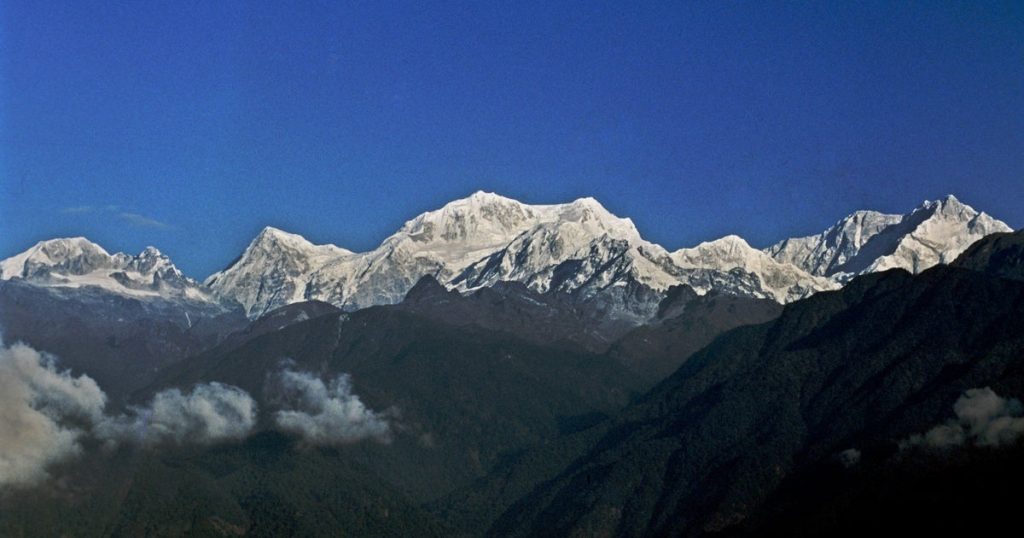A tragic incident has unfolded in the Himalayan ranges as a 63-year-old French climber, Margareta Morin, lost her life while attempting to scale Kanchenjunga, the world’s third-highest mountain. Reportedly facing health complications during her ascent, Morin’s untimely death has raised concerns regarding climber safety in extreme conditions. Meanwhile, another climber, British national Adrian Michael Hayes, was successfully rescued after suffering altitude sickness, highlighting the dangers that come with high-altitude climbs.
| Article Subheadings |
|---|
| 1) Details of the Incident |
| 2) Climbers’ Experiences and Challenges |
| 3) The Landscape of Kanchenjunga |
| 4) Historical Context of Climbing in Nepal |
| 5) Safety Measures and Climbers’ Stories |
Details of the Incident
On Saturday, May 20, 2023, Margareta Morin tragically passed away above Camp 4 of Kanchenjunga, which towers at 28,169 feet. Her expedition, organized by Peak 15 Adventure, faced numerous challenges, with adverse weather conditions complicating rescue efforts. Yogendra Tamang, the expedition leader, stated,
“She died due to health complications while ascending.”
Reports indicate that bad weather has hindered the retrieval of her body, a situation that adds to the emotional toll on family and friends.
Climbers’ Experiences and Challenges
The world of high-altitude climbing is filled with perilous challenges, evidenced by the concurrent plight of Adrian Michael Hayes. During the same expedition as Morin, he began suffering from altitude sickness while descending the mountain. Sources from U.K. media outlets, including the Daily Mail and the Sun, confirmed his rescue. Hayes, along with nine other climbers, had successfully reached the summit earlier in the day, but the challenges of descending proved to be equally daunting.
The Landscape of Kanchenjunga
Kanchenjunga is located in the eastern Himalayas, on the border between Nepal and India. It is the third-highest mountain in the world and is known for its technical difficulty, making it one of the most challenging climbs among the eight-thousanders. This peak is often overshadowed by Mount Everest and K2 in terms of attention but remains a popular target for experienced climbers. The environment poses unique dangers, including extreme altitude, unpredictable weather changes, and risks of avalanches—factors that contributed to Morin’s fatal ascent.
Historical Context of Climbing in Nepal
Nepal has a rich history of mountaineering, boasting eight of the ten highest peaks in the world. Climbing season typically spans from April to early June, attracting hundreds of climbers annually. This year, as part of the season, Nepal has already issued over 1,000 permits for various mountains, including Kanchenjunga. Over 75 permits were specifically issued for this high-stakes climb, emphasizing both the allure and the significant risks involved in challenging these formidable summits.
Safety Measures and Climbers’ Stories
Despite the dangers inherent in high-altitude climbing, many adventurers continue to pursue these endeavors. Climbers undergo rigorous training and preparation to minimize risks, yet incidents like Morin’s tragic passing remind us that despite preparation, the mountain’s power can be unforgiving. The stories of climbers, their joys of summiting, along with the somber realities of climbing accidents offer vital insights into the dual nature of the mountaineering experience.
| No. | Key Points |
|---|---|
| 1 | Margareta Morin passed away during her ascent of Kanchenjunga on May 20, 2023. |
| 2 | Adrian Michael Hayes was rescued suffering from altitude sickness on the same expedition. |
| 3 | Kanchenjunga is known for its technical challenges, making it a difficult climb. |
| 4 | Nepal is home to eight of the world’s ten highest peaks, attracting hundreds of climbers each year. |
| 5 | This year, Nepal has issued over 1,000 climbing permits, underscoring the popularity of high-altitude climbs. |
Summary
The recent death of Margareta Morin serves as a solemn reminder of the risks involved in high-altitude climbing. With several deaths already reported this climbing season, the incident brings to the forefront discussions about climber safety and the unpredictable nature of the mountains. As adventurers like Adrian Michael Hayes continue to pursue their dreams, the challenges of high-altitude climbing remain formidable and may lead to tragic outcomes. It emphasizes the need for heightened awareness and preparation among climbers as they face the demanding conditions on peaks like Kanchenjunga.
Frequently Asked Questions
Question: What are the typical risks of climbing high-altitude mountains?
Climbing high-altitude mountains involves risks such as altitude sickness, adverse weather conditions, and technical challenges that can lead to accidents. These factors can impact climbers’ physical and mental capabilities significantly.
Question: How does altitude sickness manifest in climbers?
Altitude sickness can present symptoms such as headaches, nausea, dizziness, and fatigue, which can become severe if not managed properly. It typically occurs at elevations above 8,000 feet, particularly when climbers ascend too quickly.
Question: What safety measures can climbers take to minimize risks?
Climbers are advised to undergo thorough training, acclimatize properly to high altitudes, carry necessary safety equipment, and be aware of weather forecasts to mitigate risks associated with mountain climbing.


